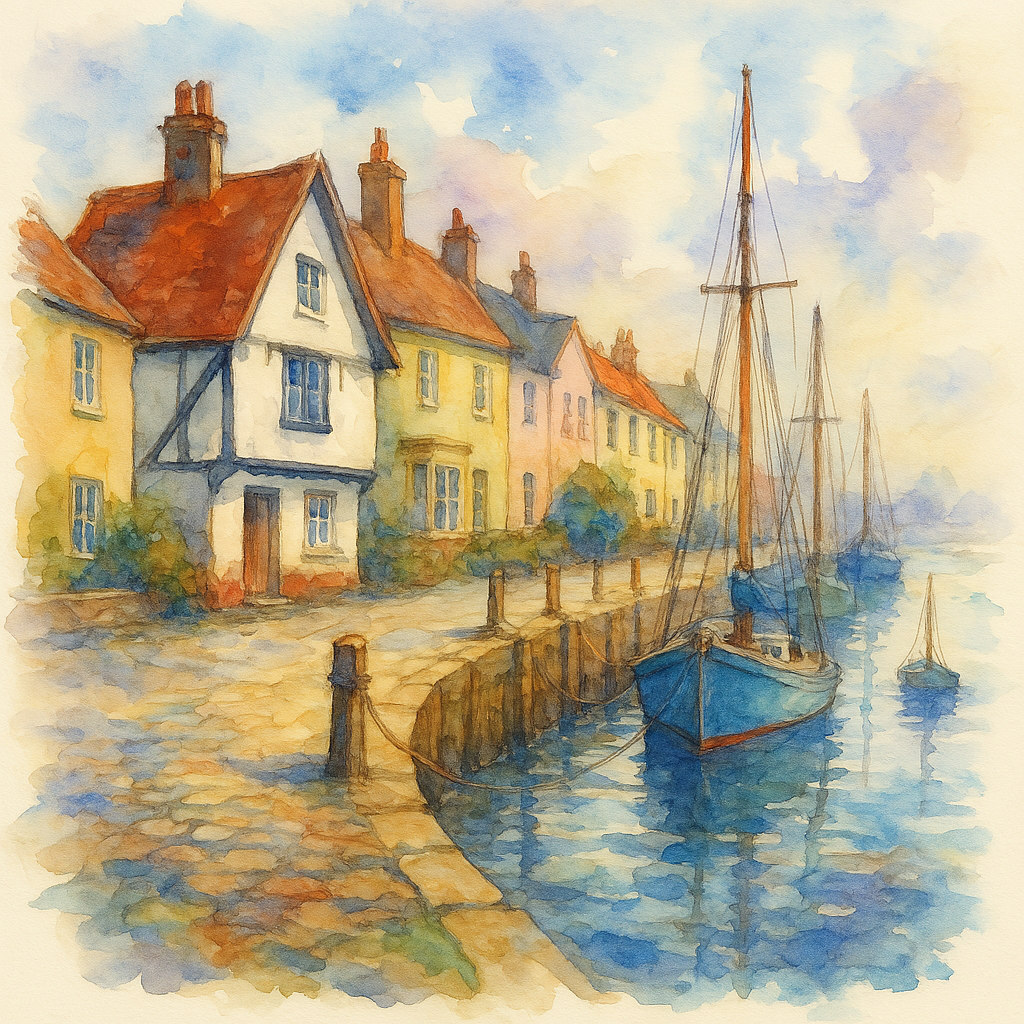History...
The Rose and Crown on Wivenhoe Quay has a rich and storied past that stretches back to before 1760, when it was built on part of the garden of Garrison House. Its riverside location made it a natural hub for seafarers and maritime trade, and many of its early landlords were themselves deeply tied to the sea—shipmasters, sailmakers, and yacht stewards among them.
In the 1800s, the pub thrived as a social and commercial centre. It hosted numerous auction sales of boats and maritime equipment, and even served as the registration point for the River Colne fishing smack races between 1782 and 1793. Interestingly, many of the pub’s licensees were women who took over after their husbands passed away, running the establishment with resilience and skill.
The Rose and Crown also had strong London connections—several landlords were born or married in London, and the capital drew both staff and patrons. One charming anecdote tells of a Wivenhoe local who, overwhelmed by the bustle of Liverpool Street Station, immediately turned around and caught the next train home.
The building itself is Grade II listed, with much of its structure dating to the mid-19th century. It features a hipped slate roof, sash windows, and distinctive bay and bow windows that overlook the quay.
It’s a place where history lingers in the beams and bricks—still welcoming visitors today, just as it did centuries ago.
Wivenhoe, the Town

Wivenhoe is a charming town nestled on the banks of the River Colne in Essex, about three miles southeast of Colchester.
Historically, it began as two separate settlements—Wivenhoe village by the river and Wivenhoe Cross on higher ground—but they merged in the 19th century as the area developed.
Wivenhoe has deep maritime roots, once thriving on fishing, shipbuilding, and even a bit of smuggling. Its waterfront still reflects that heritage, with narrow lanes and historic buildings that give it a distinct character. Much of lower Wivenhoe is now a conservation area, prized for its architectural interest.
The town’s name is Saxon in origin, likely meaning “Wifa’s spur of land,” though local folklore prefers the more whimsical “Wyvernhoe,” linking it to the mythical wyvern—a nod that lives on in the nickname of the local football team, the Wyverns.
It’s also a hub for creativity and community. The Wivenhoe Trail offers scenic walks and cycling along the river, and the town is home to artists, writers, and academics—thanks in part to its proximity to the University of Essex.
🌿 Historical Landmarks
-
St Mary the Virgin Church: This beautiful riverside church has Saxon origins, a 16th-century tower, and a Georgian cupola added in 1734. It’s the heart of the Wivenhoe Heritage Trail and a focal point for local events like Art on the Railings.
-
Garrison House: A striking 17th-century building with some of the finest pargetting (decorative plasterwork) in the country. It’s said to have housed Parliamentarian officers during the 1648 Siege of Colchester.
-
The Cage: Once a lock-up for drunkards and petty criminals, it stood near Anchor Hill—a reminder of Wivenhoe’s more unruly past.
-
The Quay: Once bustling with shipbuilding and fishing, it’s now a peaceful spot that still whispers of its maritime heyday.
You can explore many of these on the Wivenhoe Trail, a self-guided walk that brings the town’s layered past to life.